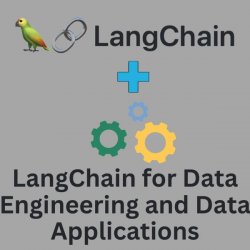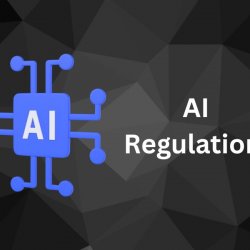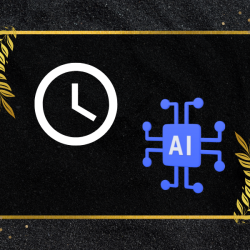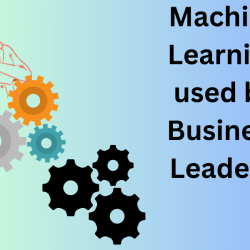A Brief Guide to Unsupervised Learning


A Brief Guide to Unsupervised Learning
Introduction to Unsupervised Learning
If you’re looking to expand your knowledge of machine learning, unsupervised learning is an important concept to understand. Unsupervised learning algorithms are used to analyze data and make meaningful decisions without the need of labeled datasets. Utilizing this type of algorithm can be particularly useful in situations like data clustering, pattern recognition and exploratory analysis.
Data clustering is one example of an unsupervised learning algorithm. This technique groups similar objects in a dataset together and labels them accordingly. By grouping the data into clusters, it’s easier to draw meaningful insights from the data. It can also be used to make data driven decisions based on these clusters.
Another example of unsupervised learning is anomaly detection. This type of algorithm is primarily used to identify outliers or anomalies in a given dataset that don’t follow the standard patterns or trends presented by other observations in the dataset. Anomaly detection can be beneficial for identifying fraud or other activities that deviate from normal business processes.
In addition, dimensionality reduction is another popular use for unsupervised algorithms. This technique reduces the number of features (variables) being used in a model while still preserving as much information as possible from that model. It allows you to more quickly visualize relationships between different variables within your data and make more accurate predictions from it.
Overall, unsupervised learning is a powerful tool for discovering patterns and correlations within a dataset without having to know any prior information about it. By taking advantage of its various techniques like clustering, anomaly detection, and dimensionality reduction, you can gain better insights into your data and use those insights to make informed decisions with confidence going forward. Data Science Course in Delhi
Types of Unsupervised Algorithms
The first type of unsupervised algorithm we will discuss is clustering algorithms. Clustering algorithms are used to find groups in data sets, even when no target classes have been defined. Examples of clustering algorithms include KMeans clustering, hierarchical cluster analysis, and expectation maximization. KMeans clustering works by creating a cluster centroid and then assigning each observation to its nearest cluster centroid. Hierarchical cluster analysis groups observations into clusters using a hierarchical structure based on their similarities. Expectation Maximization (EM) is an iterative clustering method which uses probabilistic models to determine the probability that each observation belongs to a particular class or group.
The second type of unsupervised algorithm we will look at is density based spatial clustering of applications with noise (DBSCAN). This algorithm uses the spatial density of objects in order to group them into clusters and identify outliers. It can also be used for anomaly detection and can determine certain trends or patterns in datasets which may not be visible otherwise.
The third type of unsupervised algorithm we will discuss is neural networks. Neural networks are composed of layers of neurons which pass signals from one neuron to another in order to perform various tasks such as learning patterns or making predictions about future events.
When to Use Unsupervised Learning
First let’s explain what unsupervised learning is. It is an artificial intelligence (AI) technique used to discover previously unknown information or insights from large amounts of data without relying on labeled data or preexisting assumptions. It allows machines to construct new knowledge without supervision by finding patterns and relationships between pieces of data that may not be obvious at first glance.
There are two main types of unsupervised learning clustering and association analysis. Clustering involves grouping similar data points together based on certain criteria while association analysis finds relationships between different entities through pattern recognition.
Unsupervised Learning can be applied to a variety of real world problems such as customer segmentation for marketing purposes, fraud detection for financial institutions, stock market predictions for traders etc. By applying unsupervised learning algorithms, these businesses are able to uncover hidden insights in their data that could not have been discovered if humans had looked at the same information themselves. Data Analyst Course in Delhi
Advantages and Disadvantages of Unsupervised Learning
One of the main advantages of unsupervised learning is its ability to increase accuracy. As much of the input data does not need to be labeled or classified, computers can process more data faster and more accurately than if it were done manually. This leads to more detailed insights which could otherwise be missed if manual sorting was used instead. Additionally, unsupervised learning helps improve accuracy when compared with supervised learning as machines can pick up on details which might otherwise not be detected by humans.
Another advantage of unsupervised learning is that it allows for quicker training compared to supervised processes. With a large amount of input data being processed automatically by algorithms, computers can quickly analyze and recognize patterns for results that are more accurately produced than with manual processes. This makes it ideal for applications such as facial recognition software or robotics where time frames are crucial in order to produce accurate results quickly.
On the other hand, there are some potential disadvantages associated with unsupervised learning which should also be considered before applying it to any task. One drawback is that since no human defined labels are required for training, computers may miss out on important details in data if there isn’t enough structured profit information available.
Examples of Unsupervised Learning
Clustering is one of the most common types of unsupervised learning algorithms used today. It aids in partitioning data points into various subsets, or clusters, based on their predetermined similarity using distance metrics. Clustering can be used to reveal hidden relations within large datasets without any labels.
Association rule mining is another form of unsupervised learning that uses knowledge discovery techniques to uncover associations between independent variables and target variables. This technique can be applied to any type of dataset with no predefined class labels, allowing users to gain noteworthy insights into the relationships between different features in their datasets.
Principal Component Analysis (PCA) is an algorithm that is used to reduce the dimensionality of a dataset while preserving as much information as possible from its variation. This makes it a useful tool for visualizing high dimensional datasets and deriving meaningful information from them. It mostly applies to multivariate datasets where each input feature has multiple attributes associated with it.
Autoencoders are another type of neural network that are trained to reconstruct their input data from an encoded version by itself through a series of layers composed solely of neurons known as “hidden layers”. Data Science Institute in Delhi
Challenges with Implementing Unsupervised Learning
Data Preparation & Preprocessing: Like any machine learning application, unsupervised learning requires careful data preparation and preprocessing before you can begin applying it. This includes cleaning and organizing the data, checking for outliers, converting the data into a suitable format and normalizing numerical data.
Difficulty of Selecting the Right Model: Once your data is preprocessed, selecting a model that best fits your dataset can be difficult as there are a wide variety of models available for unsupervised learning. Without proper knowledge or an experienced mentor to guide you, you may end up trying several different models before finding one that gives satisfactory results.
Knowledge Required to Understand Results: Unsupervised learning algorithms are complex systems which generate results that require expert knowledge to interpret correctly. An experienced mentor or team member who can explain how each result was generated will help you make sense of the output and how it should be used.
Training Time & Cost of Resources: Training an unsupervised learning model requires significant computing power and resources which translates into time and cost investment on your part. Depending on your project requirements and dataset complexity, training can take anywhere from hours to days or even weeks. Future of Data Science Jobs India
Utilizing The Benefits Of Unsupervised Learning
Unsupervised learning is effective at detecting patterns and uncovering nonlinear relationships among variables in a dataset. This makes it particularly useful in clustering – allowing large volumes of data to be grouped according to similar characteristics – and automated feature extraction, which extracts features from raw data without human intervention. Through these methods, unsupervised learning can detect patterns or structures that may be hard to spot by eye in the original data set.
The benefits of unsupervised learning are abundant. It is a highly efficient way to explore large databases with minimal human effort and time expenditure. It also often requires fewer resources than supervised learning techniques as it does not require collecting labeled datasets or manual annotation for training purposes. As such, it makes it easier for organizations with limited resources to gain valuable insights from their data quickly and cost effectively.
In addition, unsupervised learning algorithms are capable of finding patterns that may not be readily visible by other statistical analysis methods due to its capacity for nonlinear relationship discovery and automated feature extraction. This makes it a powerful tool for uncovering hidden relationships in complex datasets that was not possible before its invention.
What’s more, unsupervised approaches tend to be resilient when faced with noisy or incomplete data because they rely on detecting underlying structure rather than explicit labels or predictions.






Ingen kommentarer endnu